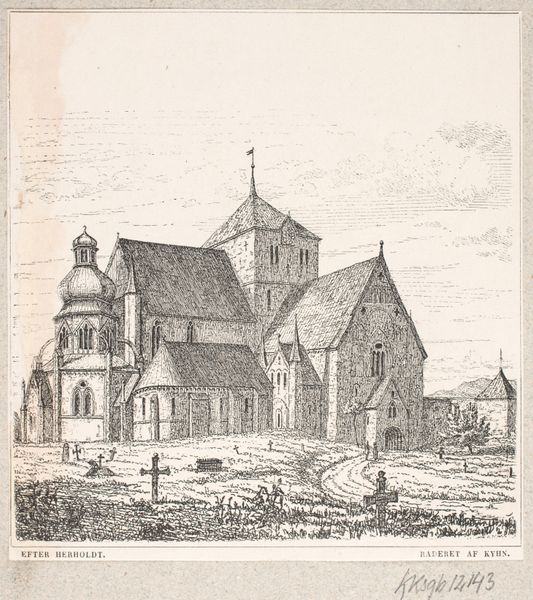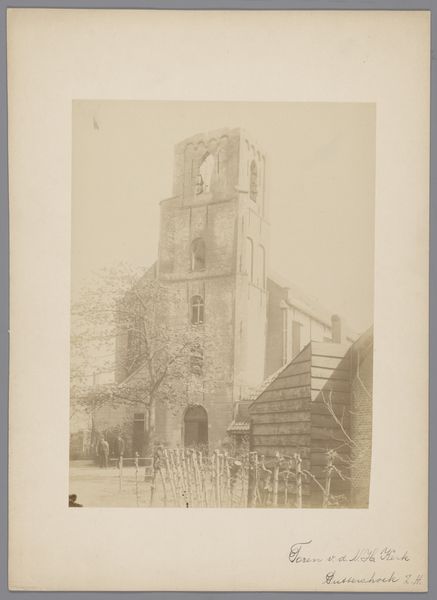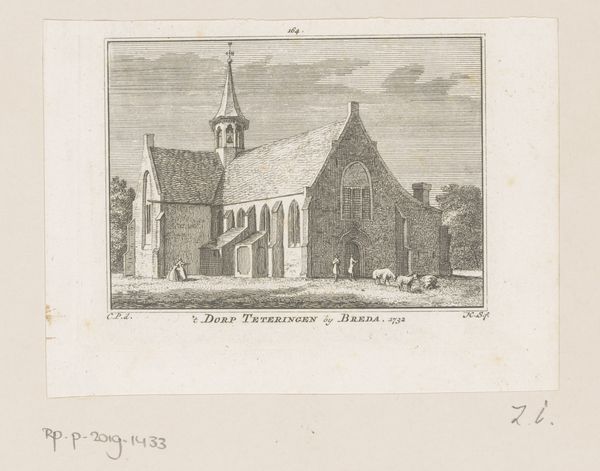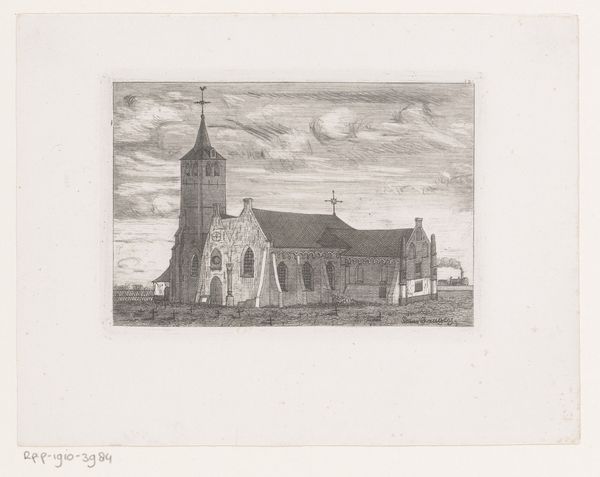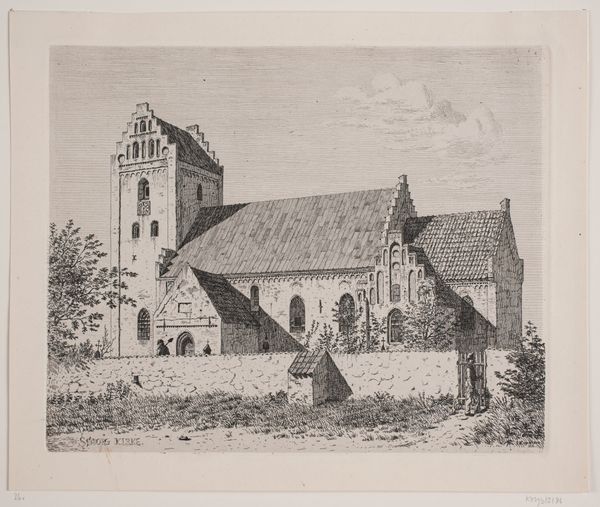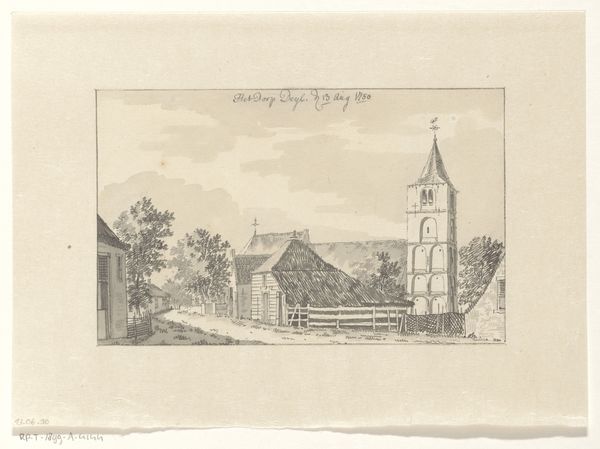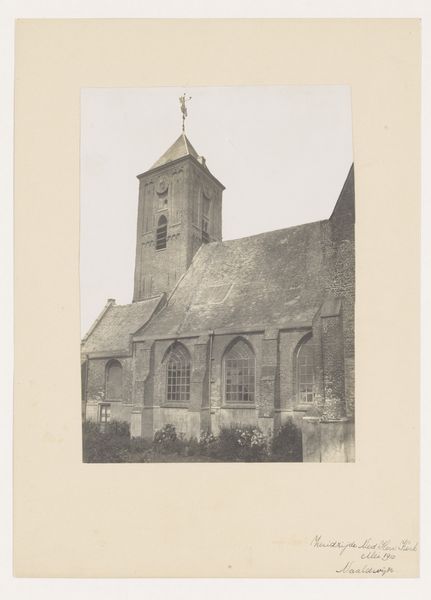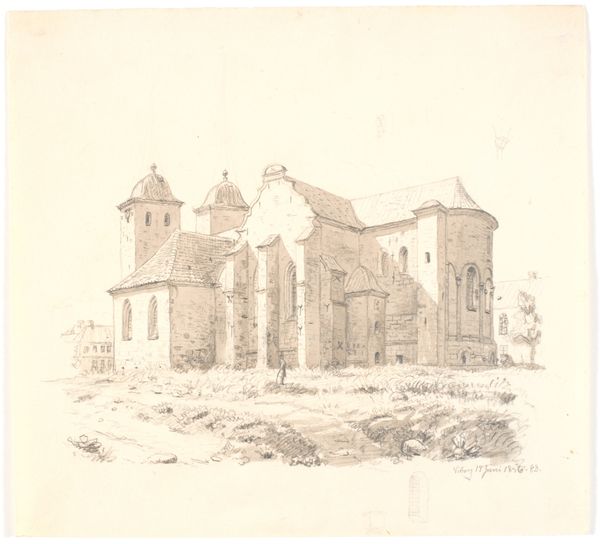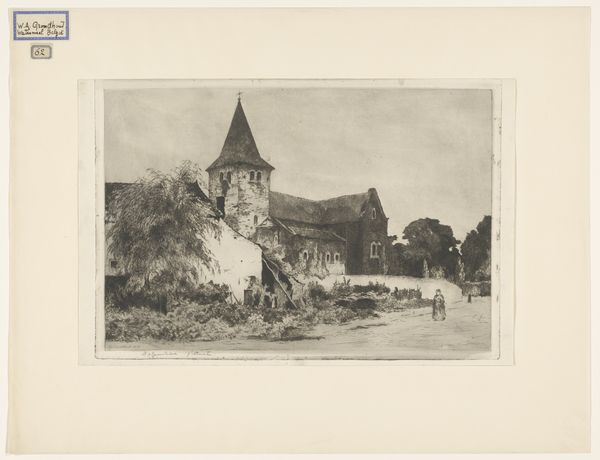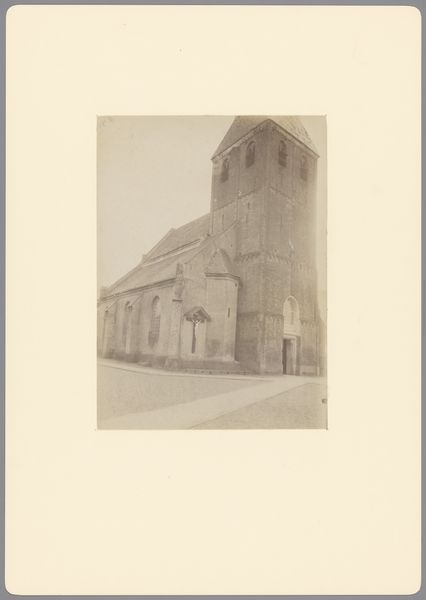
print, etching, engraving
#
medieval
# print
#
etching
#
landscape
#
engraving
#
watercolor
Dimensions: height 298 mm, width 230 mm
Copyright: Rijks Museum: Open Domain
Curator: Before us is "Kerk in de Ardennen," or "Church in the Ardennes," an engraving and etching by Jules Marie Armand Goethals, likely created between 1854 and 1879. Editor: It's lovely. Intimate, almost. The fineness of the lines gives it a very gentle feel, despite the imposing subject matter. Curator: Precisely. Let's consider the labor involved here. Goethals, rather than directly serving a patron's needs, or expressing raw emotion, chose a meticulous process. Each line is deliberate. What does that choice signify to you? Editor: I think we need to see this in the context of religious institutions and their influence at that time. Note the church's placement within the landscape, how the stone walls seem to rise organically from the earth. It's not just a building, but a part of a system, subtly suggesting an immovable hierarchy. Curator: Interesting. I’m also struck by the contrast in textures, between the rough-hewn stone and the delicate tracery of the trees. This emphasizes, through process, both the permanence and ephemerality present within nature itself. Editor: Right. And what about the almost absent human presence? This could reflect broader social power dynamics of who is omitted, marginalized, or deemed invisible in visual records and, therefore, society at large. Who inhabits, and benefits from, this "immovable hierarchy"? Curator: True, its lack creates an atmosphere of solemn reflection. And think about the production and distribution of prints. Etchings like this would have been relatively accessible, meaning images of grandeur, like a church, could circulate and perhaps subtly instill desired beliefs. Editor: And through wider circulation, images like these could either become instruments of power, or spark dialogues of resistance, reinterpretation, and reimagination across classes. Curator: I agree. Ultimately, the beauty of this piece lies not only in its aesthetic execution, but in what it can teach us about history, belief, and social forces. Editor: This is far more than an etching; it acts as a complex artifact speaking of the world's uneven surfaces.
Comments
No comments
Be the first to comment and join the conversation on the ultimate creative platform.

